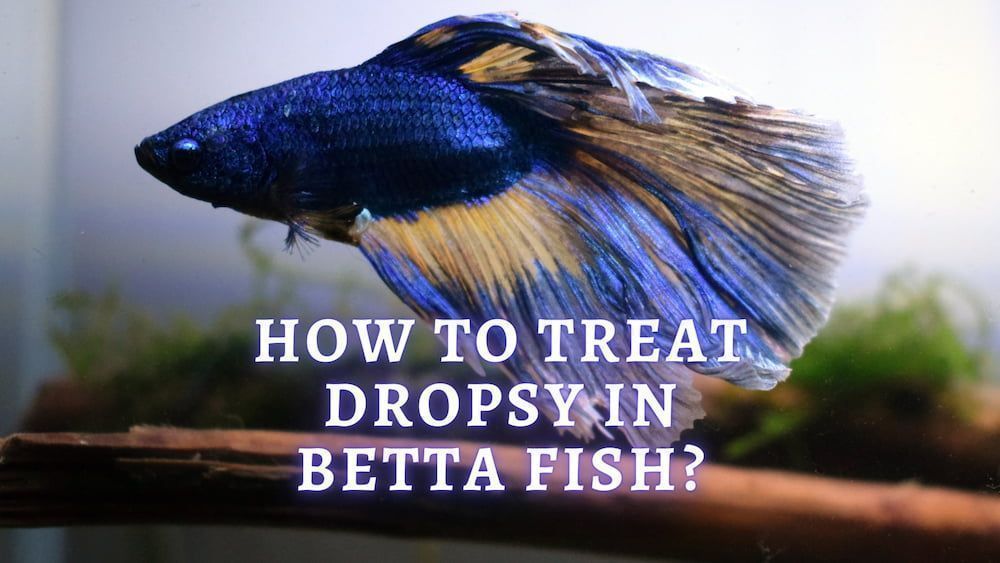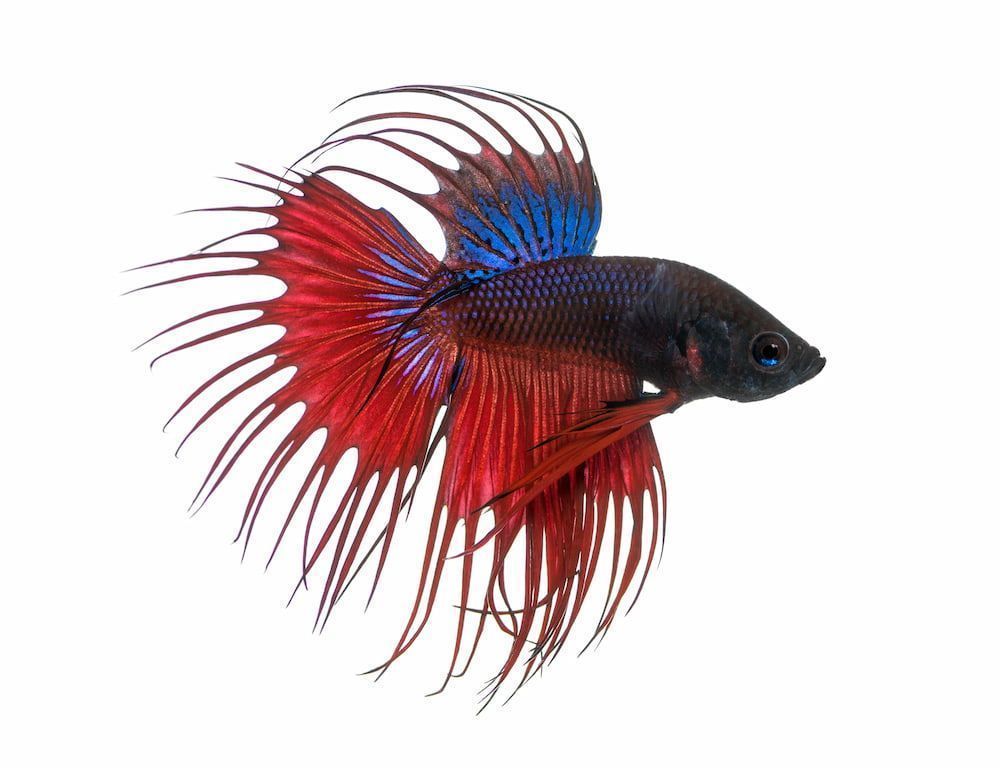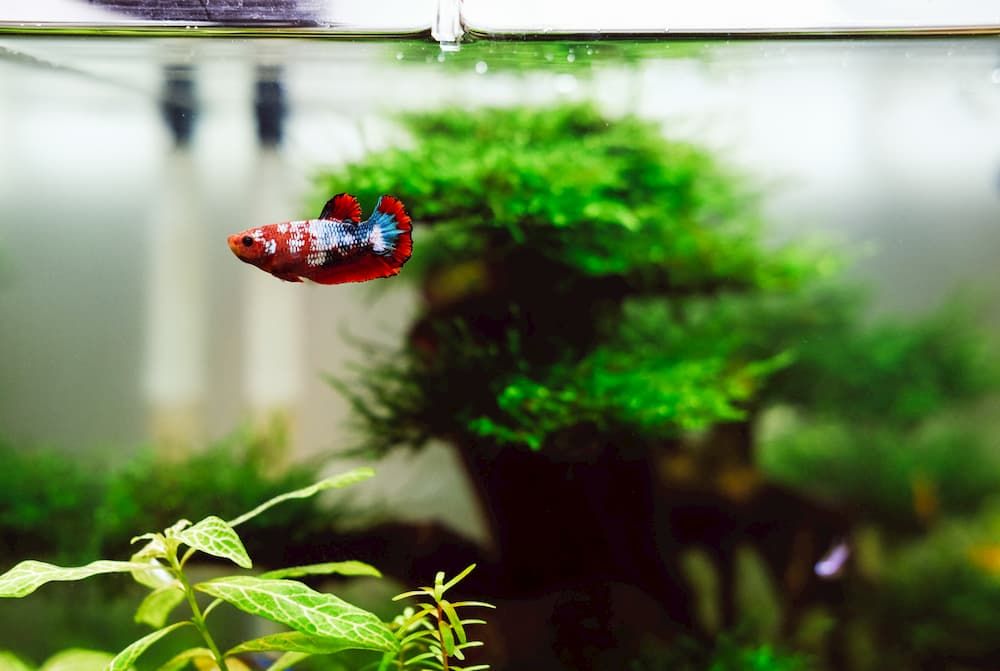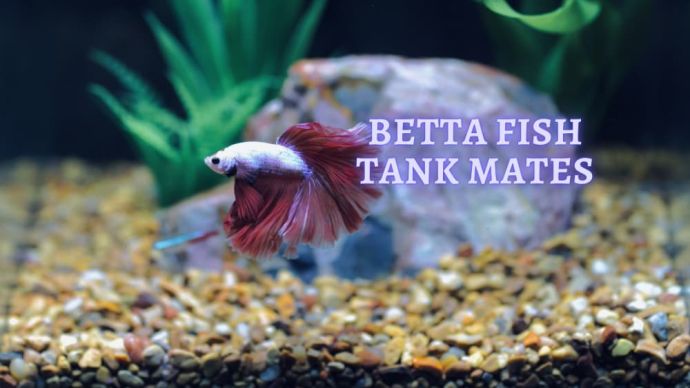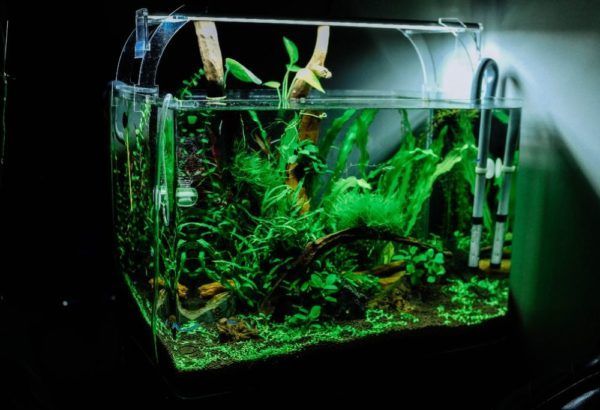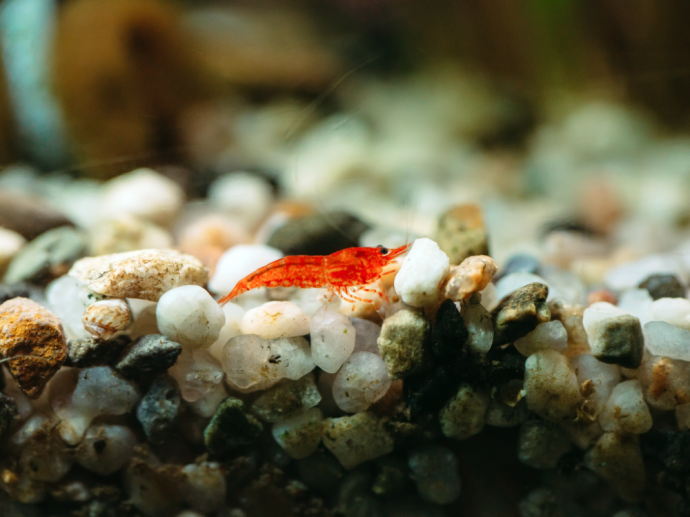How to Treat Dropsy in Betta Fish? Recognizing Signs of Dropsy and Treat it In Time
Written by:
Author: Vicki Smirnova
Vicki Smirnova is a professional writer and editor who adores animals and helps readers get along well with their pets. She has been working in digital media for more than 5 years and has great experience writing content about lifestyle, including pets. Vicki specializes in dog health and nutrition, cat feeding, dog training. She is an aquarium lover and is passionate to write about fish care at home. Also, Vicki headed several websites and worked as a news editor.
View all 245 articlesLearn about our editorial process and veterinary review board.
Viewed: 45
Updated on: 03/10/2023
Until recently, the playful fish in the aquarium cut through the bright greenery together. But something has broken in the ecosystem, and several have changed from cheerful to apathetic. They stay close to the bottom, hovering in one place. The reason may be dropsy in fish, which is considered more a symptom than an independent disease.
What Is Betta Fish Dropsy?
Dropsy is a disease characterized by belly swelling- it looks like it was pumped from the inside with liquid. The scales begin to bristle, and the eyes pop out of their sockets. Bacteria that cause ascites live in all aquariums, but they are not dangerous with proper care and strong immunity in animals. The disease manifests itself in poor conditions or sudden changes in the aquarium. The disease is caused by a bacterial infection of the kidneys, which eventually leads to kidney failure. Because of this, the exchange of fluids in the fish’s body is disturbed; that is, the fluid accumulates in the belly and causes bloating.
Dropsy is an extremely dangerous disease, which, in most cases, leads to death. It is very infectious, which means it can, in a short time, infect all the fish in the aquarium. Consider the essence of dropsy: symptoms, causes, treatment methods, and prevention.
READ MORE: Betta Fish Care Guide
How to Recognize Signs of Dropsy
The first symptoms of dropsy can most often indicate other diseases. For prevention, a sick animal must immediately be deposited in another container.
The main symptoms:
- Bulging eyes.
- Greatly swollen abdomen.
- Tubercles on the body.
- Decrease in activity and lethargy.
- Pale gills.
- Swollen anus.
- Ulcers on the body.
- White stool and mucous discharge from the anus.
- Refusal of food.
- Rapid movement of the gills.
- Decrease in color brightness.
- Stretched coda and the scales rear up.
- Rachiocampsis.
Dropsy or Constipation?
For a correct diagnosis, you need to know the mandatory symptoms of dropsy in aquarium inhabitants.
- Exclusion of invasion by worms: With ascites, the swelling of the belly is strong but uniform; when infected with worms, protruding parts – where there is an accumulation of worms – may occur.
- Exclusion of pregnancy/maturation of eggs: Swelling is so great that the scales of the fish rise and bristle. The view of the fish from above resembles a pine cone; under the raised scales, the skin is whitish.
- Exclusion of constipation: This ailment is usually indicated by bloating and thready stools. In a healthy pet, the feces immediately settle to the bottom, while in fish suffering from constipation, the excrement takes the form of threads and can hang from the anus for a long time. As a rule, the fish become lethargic and lose interest in food. In severe cases, the fish may lose the ability to move normally in the water.
What Causes Dropsy In Betta Fish?
The appearance of dropsy, as a rule, is due to several environmental factors, including improperly selected composition of the water in the aquarium, poor nutrition, lack of oxygen, age, or prolonged stress that can trigger the disease.
The immediate cause of ascites may be:
- Bacterial infection (mycobacterium, aeromonas, nocardia) is more likely to be the source of the problem if several pet are affected at once.
- Viral infection.
- Presence of protozoa in the body.
- Violation of osmotic regulation (systems for maintaining water-salt balance in the body).
It is unfavorable conditions of detention that affect a sharp decrease in the immunity of a fish. It becomes vulnerable to all kinds of viruses and bacteria, and once harmless, microorganisms have a detrimental effect.
If several pet become ill at the same time, it may be a bacterial infection. Bacteria can accumulate in a rarely cleaned aquarium and be introduced to new fish or food.
Betta Fish Dropsy Treatment
The success of treatment depends on how quickly it is started. It is possible to cure effectively only a fish whose dropsy is detected early: the key symptom is mucous excrement.
First, infected fish should be isolated from healthy ones by transferring them to a hospital tank or large jar and adding aquarium salt in 1-2 teaspoons of Epsom salts (magnesium sulfate) to 10.5 gallons of water. Further, you will have to use antibiotics to cure the dropsy of aquarium fish.
The use of antibacterial drugs can take two forms:
- Therapeutic baths.
- Issuance of the drug with food.
When using therapeutic baths, the antibiotic dissolves in water in a certain proportion according to the instructions. This method is suitable for cases when the fish eats live food, and mixing it with the medicine is impossible.
When adding an antibiotic to the feed, it is preferable to use small flakes with which the capsule’s contents are mixed. The choice of drugs is quite large: Maracyn, Sera Baktopur Direct 5, and potassium permanganate. Treatment continues until the symptoms of the disease disappear.
However, it should be understood that with this disease, the functioning of the kidneys and intestines is disrupted; therefore, to increase the chances of success, treatment must be started urgently! When an aquarium fish looks bloated and “ruffled,” it is pointless to start therapy. It is also worth mentioning that there is an opinion about the danger of mycobacteriosis for a person in contact with an infected pet. The infection threatens to enter the body through scratches on the skin, so when caring for a problem fish, you must wear latex gloves.
How to Prevent Dropsy in Betta Fish’s body
The best prevention of the disease is to maintain the necessary detention conditions and minimize stress. Find out at what temperature and what pH of the water the fish are most comfortable in your aquarium. As a rule, these are the conditions of the natural habitat of this breed. A sharp change in the temperature and water-salt regime or their long-term violation significantly increases the likelihood of the disease in principle.
In addition, the quality of nutrition is of fundamental importance: the use of expired, dirty food, underfeeding, or, most often, overfeeding are unacceptable. Poor water quality also causes a decrease in immunity, so the incidence of dropsy is higher where there is less water change in the aquarium, and the excrement of the inhabitants accumulates in the soil.
Most non-aggressive fish breeds need hiding places in the aquarium landscape, especially in the presence of more aggressive neighbors. The inability to hide is a big stressor for a calm fish.
The principle of prevention is simple – the less stress a fish has to endure, the more successfully its body will cope with the threat of disease.
Do not, in any case, plant aggressive neighbors with peaceful fish, as the former will be in constant stress. For catfish, consider the presence of shelters. Under good conditions, the immunity of the fish is strong and will cope with the causative agent of the disease.
READ MORE: Breeding Betta Fish
Is Dropsy Contagious to Other Fish?
Dropsy in fish is a contagious and dangerous disease. It is connected with improper conditions of detention or their sharp deterioration. The stomach of sick fish is filled with liquid, which causes deformation of the internal organs. Treatment in the early stages of the disease can be effective. If it has moved to the last stage, the fish must be euthanized, and the aquarium urgently disinfected to avoid infecting other individuals.
Common Questions
What is the fastest way to cure dropsy?
Dropsy is a fish disease that is usually caused by a bacterial infection. It can manifest as swelling, accumulating fluid under the fish’s skin. Treating dropsy can be complex and depends on many factors, such as the type of fish, the size of the fish, and the severity of the condition.
Can a fish survive dropsy?
Fish with dropsy can survive with timely and proper treatment. However, the fish may die if the disease is not noticed or treated.
Can Bettafix cure dropsy?
Bettafix is an aquarium medication often marketed as a cure for various fish diseases and conditions, including dropsy. However, it’s important to note that there is no definitive cure for dropsy, and Bettafix may not be effective in treating the condition.
Is dropsy always fatal in fish?
Dropsy is a serious disease and can lead to the death of the fish, especially if the disease has been long-term and untreated. At the same time, the accumulation of fluid under the fish’s skin can lead to metabolic disorders, negatively affecting its health and survival. Therefore, if you find signs of dropsy in your fish, it is recommended that you immediately take measures to treat and prevent the further spread of the disease.
READ MORE: Betta Fish Types
Conclusion
The causes of dropsy are bacterial or viral infections, as well as metabolic disorders, improper feeding and damage by the fungus ichthyosporidium. Symptoms include a markedly swollen abdomen, raised scales, redness of the abdomen or fin bases, ulcers, bruising on the body and long, white fecal masses. The affected fish becomes inactive and lethargic, will refuse food, and will rapidly breathe. Sometimes, there is bulging and a pale color of the gills. Fluid accumulates in the body cavity and may be accompanied by discoloration of the internal organs. Pathogenesis: Dropsy can occur in fish that are debilitated for various reasons. One individual can get sick with a completely safe aquarium, where the fish look healthy.
Dropsy can be cured with antibacterial drugs (for internal use) or antibiotics and only in the early stages of the disease. Fish with dropsy (if the treatment does not help) should be killed, and aquarium items and appliances should be disinfected.
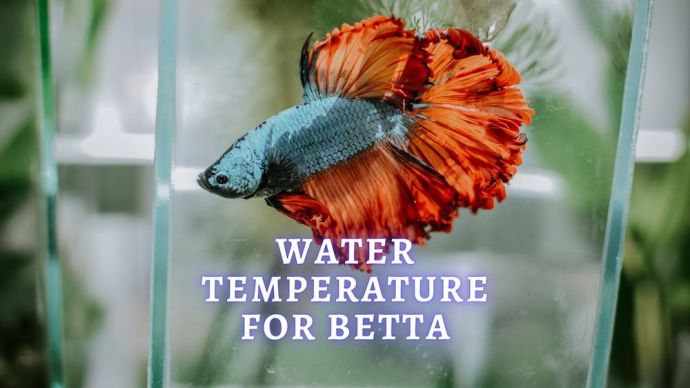 Freshwater Fish Betta Fish Temperatures: Guide To The Perfect Betta Fish Water Temperature
Freshwater Fish Betta Fish Temperatures: Guide To The Perfect Betta Fish Water Temperature - 73
- 0
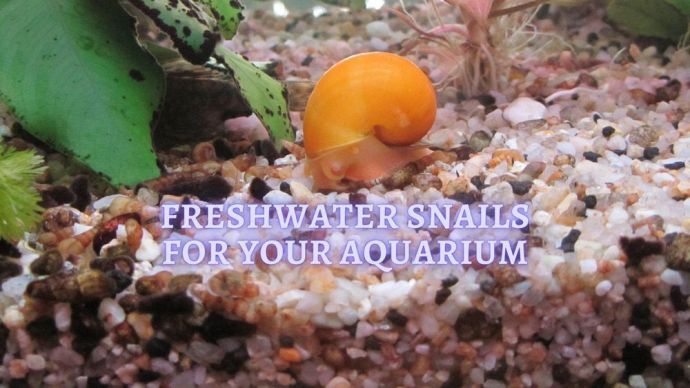 Fish Owners Tips Types of Freshwater Snails: Exotic cleaners for your Fish Tank
Fish Owners Tips Types of Freshwater Snails: Exotic cleaners for your Fish Tank - 1514
- 0









